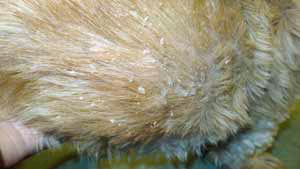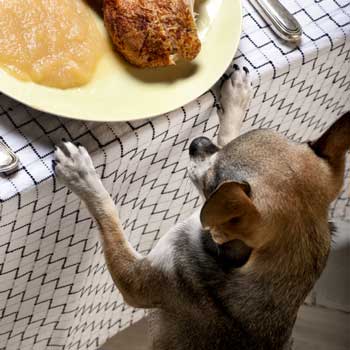Dog Escapes Home to Find Hospitalized Owner
Zander, a white samoyed-husky mix, navigated two miles of tricky neighborhoods and across a busy highway to find his owner who was in the hospital, and now he’s not leaving his side.
As John Dolan lay in his hospital bed at the Good Samaritan Medical Center in Islip, N.Y., Sept. 27, he got a phone call from a hospital employee that he had to come get his dog. One problem, Dolan was inside the hospital and his wife, Priscilla, was asleep at home.
When Zander and Dolan were finally reunited, they couldn’t be happier.
“He’s my boy. He’s been glued to me ever since,” Dolan told (TV show) “Good Morning America” today.
Dolan called his wife last Thursday to tell her to come get Zander outside the hospital. She didn’t know he was missing until she got the call.
“We couldn’t believe it. I was sleeping and I was like, ‘Oh my God, what is he doing there?’” Priscilla Dolan told “GMA.”
While Dolan was in the hospital Zander was very sad and moping around the house, Priscilla Dolan said. He was missing his best friend.
“He sleeps right next to John and John walks him a lot,” Priscilla Dolan said.
Zander is a 70-pound, approximately 7-year-old samoyed-husky mix that Dolan and his wife had rescued from a shelter five years ago who has a history of escaping. The hospital isn’t in the direction that he’s gone before, so the Dolans aren’t sure where he was heading this time.
“Was he on his way to Hollywood? I don’t know,” John Dolan joked.
ABC News’ Jennifer Abbey contributed to this report.
Source: ABC News
Opinion: Pet Survey Masks Cats Intentions
Petfinder.com displays a number of statistics about pets and pet ownership in the U.S. as collected from the American Humane Association. Under the heading of ‘Americans treat their pets like family’ they list the interactions that occur with pets and their owners. To wit:
In 70% of feline households, cats are allowed to lie on the furniture. In 40% of canine households, dogs are allowed to do so.
In 65% of cat-owning households, cats are permitted to sleep at night on some family member's bed compared with 39% of dogs.
In 75% of the nation's dog-owning households, the dog is treated to rides in the family car compared with 8 % of households with cats.
These are just a few of many interesting items listed, but some of these questions regarding cats were a bit rhetorical, if not absurd.
For instance, they state that 70% of feline households, cats are allowed to lie on the furniture. The operative word here is “allowed”. The remaining 30% of cats are lying on the furniture when you are not around. In fact, those cats will hear you turn off the TV and that is their signal knowing that you will be vacating “their” space and can sleep on your Ming dynasty antique silk covered chair. Just be happy you don’t find a hairball on it in the morning.
The survey says that 65% of cats are “permitted” to sleep on a bed at night. The other 35% have found a more restful spot without your thrashing about and talking in your sleep. See above.
Finally, a large majority of dogs are “treated” to ride in the car as compared to 8% of cats. Cats are control freaks and unless they are allowed to drive the car, they have little interest in being a passenger. Most often, those 8% of cats that are allowed in cars will always want to steer while you press the accelerator.
See the complete survey at www.petfinder.com and see how you match against fellow pet owners.


